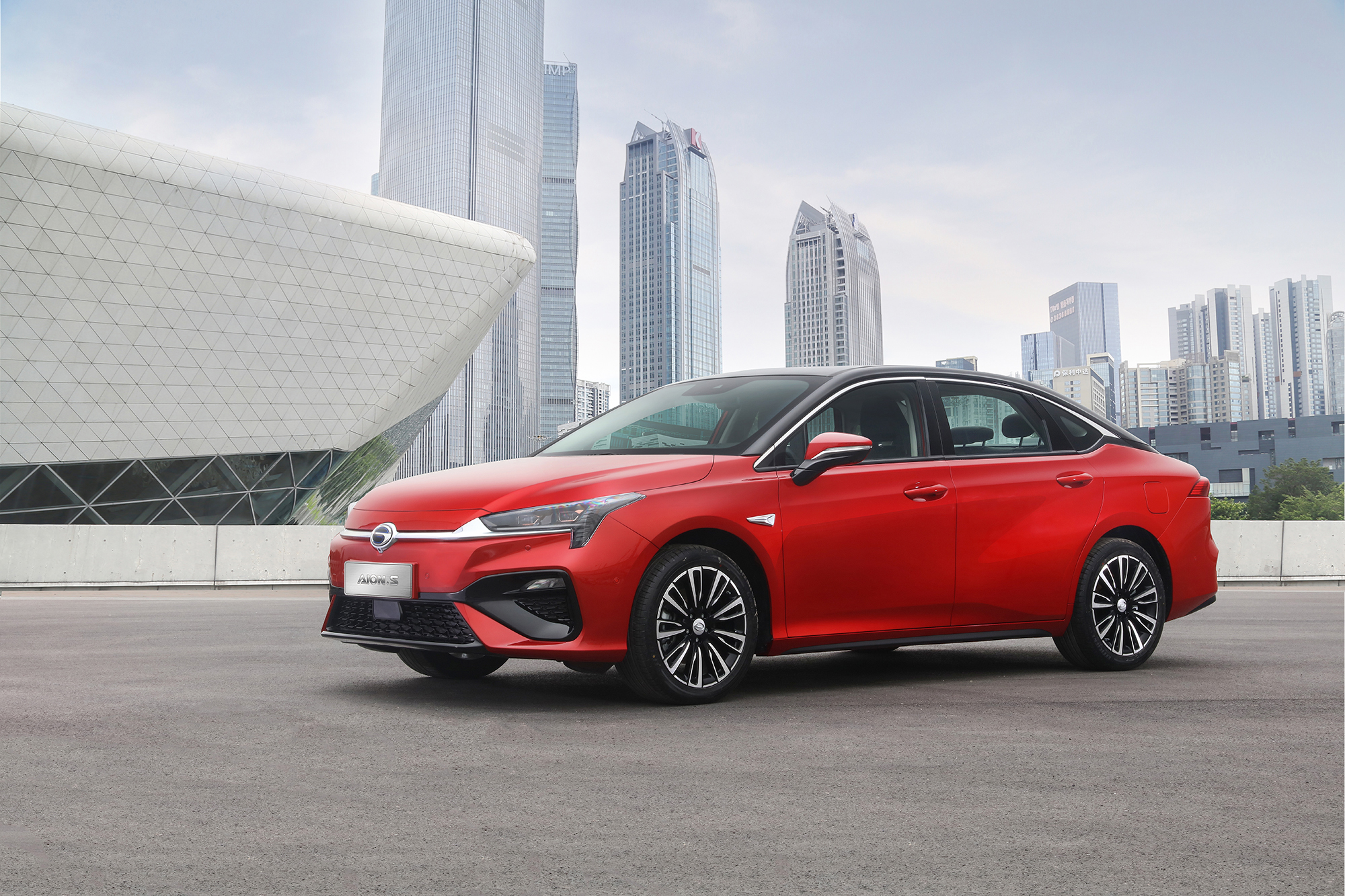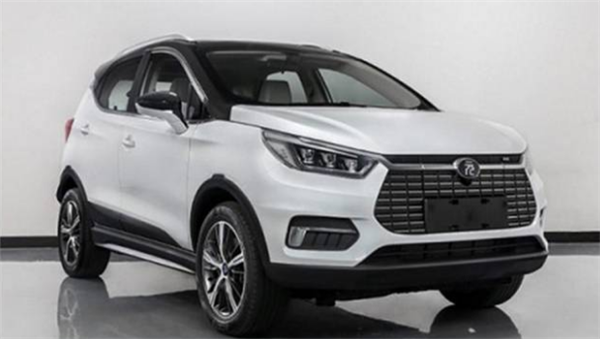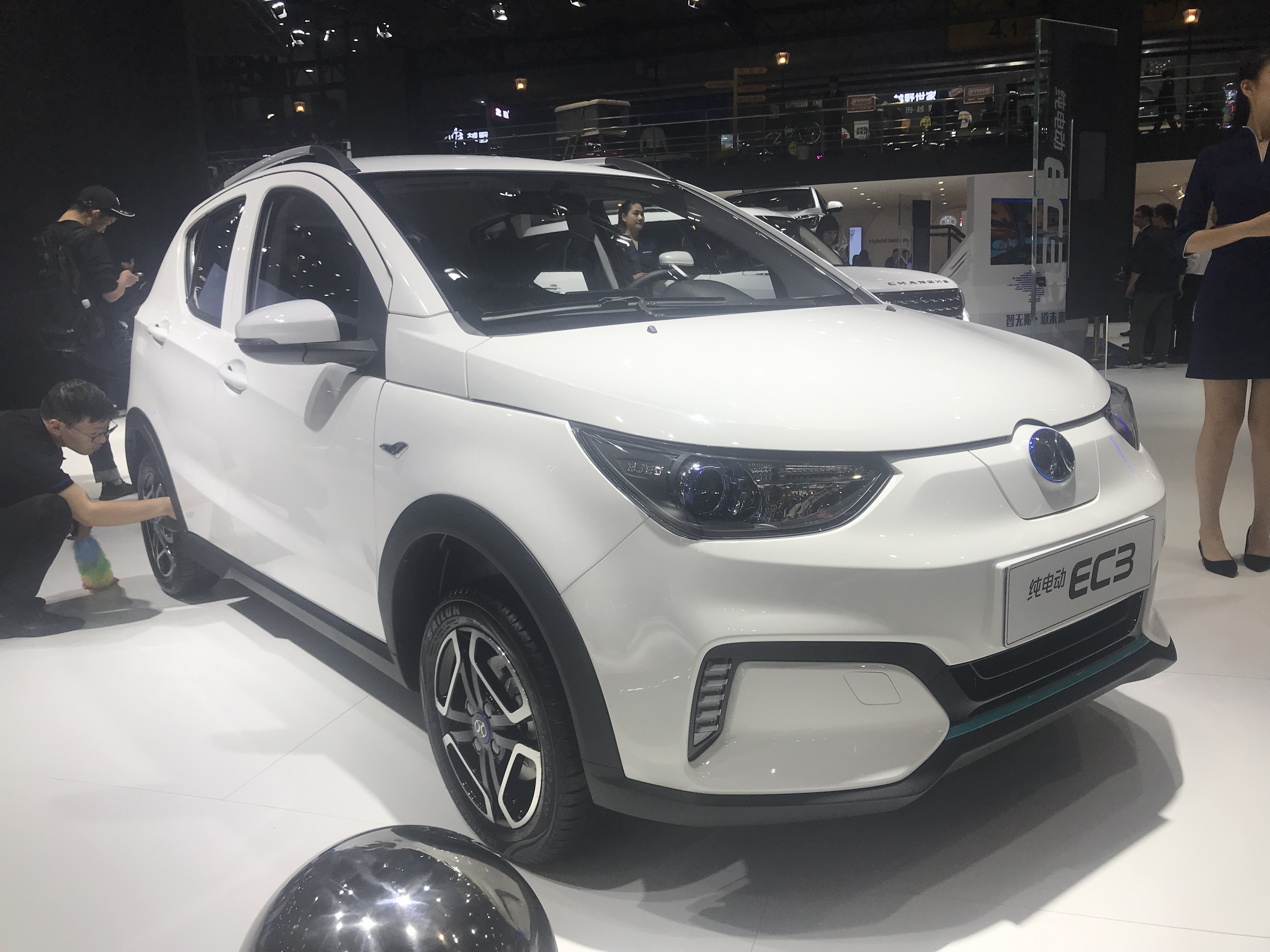 |
| GAC Aion S: the new cool kid in China |
After the
(subsidy) storm
After
an end-of-incentives derived surge in June, July saw the expected
hangover, with the Chinese plugin market dropping 7% YoY, and the 70,000 units
of last month representing less than half of the deliveries of the previous
month, with PHEVs sinking 22% YoY in July, their worst drop in over two years,
while amazingly, BEVs still managed to grow, if only by 1%, despite the gloom
around it (the overall market also dropped 4%).
In
the midst of this adverse environment, July’s PEV share reached 4.6%, dropping
the 2019 PEV market share by 0.2% share, to 6.1%, which is still well above the
2018 result (4.2%), and depending on how fast the market recovers, it could still
be on target to reach my forecast of 8% for 2019.
The
reason for this drop lies on the subsidy changes that happened on June, 26, when
NEV subsidies were cut off completely for vehicles with less than 250 kms
electric range, while those with higher range saw their subsidies halved, which
made some models to peak in June.
From
now on, we should see a less subsidy dependent market, with several models
unable to compensate the subsidy loss, while others will continue thriving, as
we are starting to this month.
This
is just another factor adding up to the reasons on why China is without doubt
the most fascinating and fast evolving plugin market on Earth, with several
changes happening at the same time, be it foreign OEMs trying to get a piece of
the NEV cake / avoid fines imposed the new quota system, local makers scaling
up production with a never ending slew of ever more competitive models, or the
run for survival of the several startups on the market.
As
expected, this month was filled with surprises, with several models drying up
their output, while others continued their career as nothing had happened.
In July, the most
important surprise in the models ranking came in #3, with the SAIC-GM offspring
Baojun E-Series scoring an amazing 6,328 units, while the #4 GAC Aion S and #5 BMW
530Le also shined.
Here’s last
month Top 5 Best Selling models individual performance:

#1 – BAIC EU-Series: The
electric sedan scored 8,937 units last month, with deliveries dropping
by half regarding June, but the good thing is that orders kept coming in, and
things should only improve from now on, this confirming to be the brand’s right
bet for 2019. The design and specs (215 hp, 416 kms / 260 mi NEDC, US $32,500)
allows it to remain a popular choice, but with the competition tightening every
passing month, BAIC will have a tough job ahead of it, if it wants to keep
leading the pack.

#2 – BYD
Yuan / S2 EV: To counterbalance the subsidy cut, BYD launched a basic version of the
Yuan EV, called the S2, with a less powerful electric motor (only 70 kW / 93 hp)
and a smaller battery (41 kWh), allowing it to keep the 6,000-something monthly
results. With the brand prioritizing BEVs, battery demand is increasing faster
than before, so higher priced models (Tang, Song, Qin, etc) have the priority
over the Yuan, making it hard for the crossover to surpass the regular 6,400
units of July. The Yuan EV has unrivalled specs (58 kWh battery, 410 kms/255 mi
NEDC range, 163 hp motor), given its price (25,000 USD), while the S2 version,
some 2,000 USD cheaper, will appeal to the more cash-strapped customers.

#3 – Baojun
E-Series: Shanghai Auto and General Motors had high hopes for
their tiny two-seater, and despite an irregular career, the last evolution of
the tiny two-seater, the E200, which has been recently updated with a 250 kms
NEDC range version, reached the podium for the first time since January, having
registered 6,328 units last month. The updated range, thanks
to a new 24 kWh battery, is a crucial tool to reach the subsidy minimum range
requirement, which added to its competitive price (CNY 93,900 / USD 14,700)
before subsidies, makes it an appealing model, especially considering its
modern design and features, and the fact that most of its competitors lost the
access to subsidies. Maybe GM could consider exporting it?

#4 – GAC Aion S: Just a couple of months ago I was
mentioning the big potential of this recently landed model, saying it could
reach a 10,000 units/month pace this year. And it sure looks like it will,
because in only its third month in the market, the sleek sedan is already at 3,406
units, reaching the 4th place in July. Another sedan inspired by the
Tesla Model 3 formula, GAC has high hopes for its new dedicated EV lineup, the
Aion. Right now we have the sedan Aion S, but a midsize SUV, the LX, will soon
follow. But back at the Aion S, beyond the stylish (and aerodynamic - 0.245cd)
looks, this new model bears some impressive specs: a 59 kWh CATL NCM 811
battery, 510 km / 318 mi NEDC range and Level 2 driving aids, but the real
killer is the price: Around 180,000 CNY / $26,000. Before subsidies. Like Kanye
West would say: “Now, I ain’t sayin’ it’s a Tesla-killer / But the Aion is
messin’ with the Best Sellers…”

#5 – BMW
530Le: The rise
and rise of BMW’s luxury sedan in China demonstrates two intersecting trends,
first the never-ending increase in demand for environmentally-friendly vehicles
in China, and second the need to fulfill the plugin quotas. Add the two
together, and you have 2,752 units results, even without access to
subsidies (then again, let’s face it, subsidies for cars at this price level
don’t really make that much of a difference, the owners just use the money for
some nicer alloys or optional creature comforts…), so the leader in the Luxury
category should remain selling at some 2,500 units per month, which is well
above its direct competitors, that are happy to reach 1,000 units in one month.
 |
| Hey?!? Remember me? The EC-Series? I'm back!... |
2019 ranking
The market is
dynamic as ever, with plenty to talk about, this time the main reason for
changes were the subsidy derived deliveries dry up of some models, some of them
being completely unexpected.
We’ll start with the
most important position change, with the BYD Tang PHEV displacing its sibling,
the BYD e5, from the podium, with the sedan model seeing its deliveries almost
disappear with the subsidy cut. This was one of the most surprising slumps, but
considering the e5 sales are directed towards price-sensitive customers, like
taxi fleets, one can understand it.
The question now
is, what will BYD do about it? Let’s not forget, the e5 is the workhorse that
supports the brand, so that the fancier Dynasty models (Tang, Song, Qin and
Yuan) can shine.
On the other
hand, the most surprising good result came from the Baojun E-Series, that
jumped three positions, to #7, profiting from the fact that is one of the few
(the only?) small two-seater city EV that fulfills the minimum range
requirements (250 kms NEDC) to keep subsidies coming in.
Because there is
a steady demand in big cities for this kind of vehicles, not only from private
buyers, but also by car-sharing companies, expect the E-Series to continue
thriving, at least until the competitors launch updated versions of their own
city EVs.
In the second
half of the table, BAIC is on the up, with the small EC-Series climbing one
position, to #18, while the EX-Series crossover shows up for the first time
this year, in #20, making it three Beijing Auto models in the Top 20, a first
this year.
Indifferent to
the subsidies cut, the BMW 530Le jumped to #14, and has the Tesla Model 3 just
449 units away, so the German model could still climb further in the next couple
of months.
The race for the
best-selling foreign nameplate seems to be warming up now, as the current
leader VW Passat PHEV lost speed, and should be pressured soon by both the
Tesla Model 3 and BMW 530Le, in what could be an interesting race to follow.
The Xpeng G3 EV,
from the startup Xiaopeng, slowed slightly the pace, delivering 1,515 units
last month, but it was still better than WM Motors (1,093 units) and Nio (1,502),
although this last one saw the recent ES6 reach 1,066 units in July, so expect
Nio to recover the Best Selling Startup title soon, thanks to the ES6
production ramp up.
Talking about
production ramp ups, the much hyped GAC Aion S sedan is growing fast, having
reached 3,406 units last month, putting to shame the archrival Geely Geometry
A, that scored only 1,076 units, dropping 37% regarding the previous month. Although
the GAC sedan is still 3,000 units below the Top 20, if the model continues to
grow deliveries at this pace, it shouldn’t take long for it to show up in the
ranking.
How high will the
GAC sedan go? Top 10? It all depends on the speed of the production ramp up,
but one thing is certain: The Aion S looks to be a strong contender for a Top 5
spot in 2020.
Looking at the
manufacturers ranking, BYD (23%, up 1%) is leading comfortably, thanks to the collective
success of its lineup, while below it, BAIC (10%) and SAIC (8%) remain in the
medal spots.
Outside the
podium, Geely (6%) increased the distance to other, smaller players (Chery,
JAC…), while it prepares to go after a medal position in the coming months.


I have the feeling these numbers will be revised later this month or next month. When I looked at Nissan, the Sylphy EV number was just missing.
ReplyDeleteBe careful next month, the cumulative numbers could be way off from the sum of the reported monthly numbers.
But you already know that.
i agree.
DeleteAny news about the zero emission mandate rules for 2021 and the following years?
ReplyDeleteThe 2020 target is 20% above the 2019 one. It will be interesting to see to what extent China replaces the carrot (subsidies) with the stick (zero emission mandates).
To reach 8% PEV share for the year, the share would have to shoot well past 10% for the last couple of months... Right now, it doesn't look like that's in the cards.
ReplyDeleteThe subsidy cut wiping out virtually all models, but with a few select exceptions, is very curious. I wonder whether these might be models that didn't have enough production to meet the pulled forward demand in time? Can't think of any other plausible explanation.
(And if that's the case, coming months might actually be even *worse*...)
I'm surprised to see several PHEV models also see major drops. Was there a change in subsidies for these as well?
ReplyDeleteYes, 90% of them lost access to subsidies. If i am not mistaken, only PHEVs with over 80 kms NEDC electric range keep (a smaller) subsidy.
DeleteSaying that incentives are less relevant for expensive models seems to contradict pretty much all empirical evidence?... Though I suspect that, unless incentives are very high, it's more of a psychological factor than a matter of actual affordability.
ReplyDeleteUh...I don't think so. Where i live (Portugal), there is a price cap for access to subsidies (63k eur), and yet, both the Tesla Model S & X, Range Rover Sport PHEV and Porsche Panamera PHEV feature in the country PEV Top 20...Proof that subsidies do not matter that much for those high end vehicles.
DeleteThe S2 being only $2,000 cheaper than Yuan seems very suspect. The battery size difference alone should make at least a $3,000 difference in cost -- and that doesn't include margins...
ReplyDeleteI guess there might be some distortions in pricing due to the NEV credit conditions (don't know the details) -- but even then, how would they expect *anyone* to buy the one with much, much inferior specs, just to save 8% on the price?... That doesn't sound right. Unless there are other factors to consider (taxation? insurance?), I think there must be something wrong with these numbers.
Could be, i am not sure, you know, information coming from China is many times scarce or inaccurate. Or both.
DeleteThis could be the case.
Where would GM export the E200 to? They have no meaningful presence in Europe; while the US doesn't really have a market for this sort of vehicle...
ReplyDeleteAlso, while the Chinese price looks very attractive, I suspect this prices in the effect of NEV quotas, which is likely significant -- I don't think the same would be the case for other markets where GM might consider selling it. Add transportation costs and duties, and I don't think it would actually end up particularly competitive compared to the Smart ED...
(While the current-generation Smart ED has worse specs, IIRC a new variant -- presumably with improved specs -- is expected pretty soon?)
South America. Other Chinese companies (JAC) are already tiptoeing those markets with small (and cheap) city EVs.
DeleteI wonder whether the Aion S might actually be first to use NMC 811 cells?...
ReplyDeleteSo Nio introduced the ES6 right after the subsidy cut? I'm not sure whether that's very fortunate timing (making up for ES8 cliff right in time), or very unfortunate timing (just missing out on higher subsidies while they were available)...
ReplyDeletetesla sold 22000 cars in the first halv.https://hevcars.com.ua/reviews/tesla-prodala-pochti-22-000-elektromobilej-v-kitae-v-pervom-polugodii-2019-goda/
ReplyDeleteAny news on when the subsidies will finish completely? Any chance for model 3 customers to still get a slice of the pie?
ReplyDeleteNot sure when the subsidies will end, i guess it will depend on how fast the market grows, if i had to bet, i would go for 2021, with 2020 having subsidies only for long range (> 400 kms) EVs.
DeleteSo yes, i believe the China-made Teslas will have access to subsidies in 2020.
IIRC the official timeline is for the direct purchase price subsidies to end after 2020.
Delete(There are other subsidies though, including a purchase tax waiver, that Tesla recently got access to...)